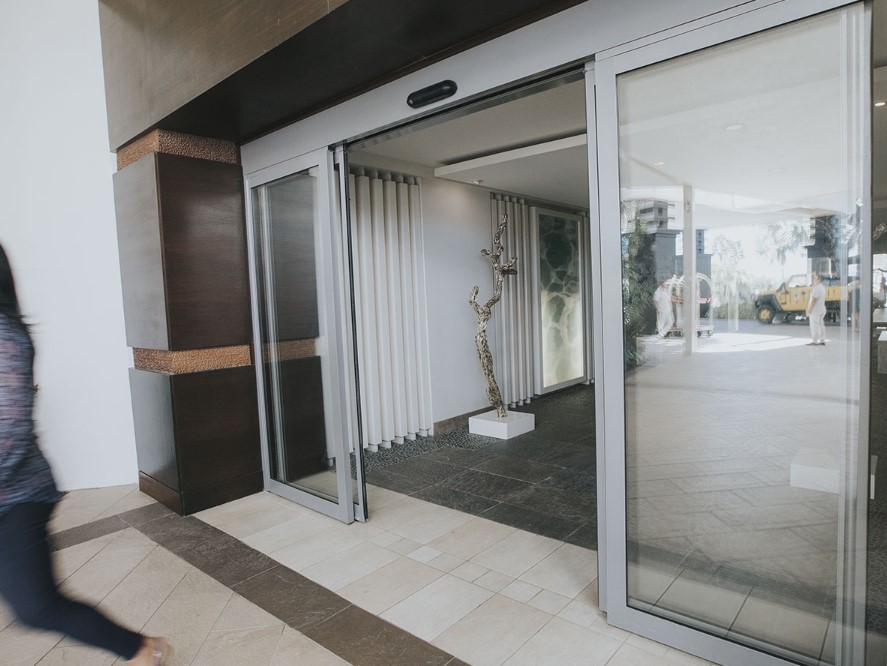
Whether you’re looking for information on automated door safety compliance or you’re just looking for more information on the subject, there are several things you’ll want to know. These include the basics of hydraulic closures and ADA compliance, the components in a roller assembly, and the power-assist operators.
ADA compliance
ADA for automated door safety compliance is a requirement for many public facilities. Automatic doors are designed to provide accessibility for people of all ages and abilities. However, improper installation and operation can be dangerous for the people using the doors and the disabled community. Therefore, the Department of Justice (DOJ) publishes ADA Standards for Accessibility to Public Accommodations and Commercial Facilities.
In addition, the International Code Council (ICC) and the American National Standards Institute (ANSI) publish standards to address doors’ operating and functioning characteristics. The ADA standards for automated gates are also called the ANSI/BHMA standards.
The ADA standards for automated doors address many issues, including:
The clear width of an entry must be at least six inches wide. This is based on a clear opening provided by all leaves in the door’s open position. Therefore, the maximum opening force of an automated entry is five pounds.
Revolving type doors
Unlike other automatic doors, revolving-type doors require more safety sensors. They also need more motor controls. They also need to be serviced daily by trained personnel.
Whether you are a building owner or manager, you are responsible for the safety of your revolving type doors. You must ensure they are safe and the maintenance providers you hire follow manufacturer recommendations.
Typically door manufacturers participate in industry programs that set standards for safe operation. These standards cover safety attributes such as temperature, pressure, and loss of power. This is particularly important for revolving type doors.
For example, if the revolving door’s drive assembly is designed to be manual, the door will only be able to rotate when there is the power to the motor.
Power-assist operators
Whether in a hospital, office, or retail space, you’re probably familiar with the term “power-assist operators.” These automated door operators open or close a door at a reduced force. While these are not necessarily accessible, they can help improve accessibility for those with mobility difficulties.
Three types of automatic door operators can be used on revolving pedestrian doors. The first type is a pneumatic low-energy operator. This type is ideal for quiet operation and aesthetics.
A pneumatic operator can be combined with a pneumatic exit device to provide safety for those in hazardous areas. The operator is also easy to install and can be adjusted for power assist.
Another type of automatic operator is an electro-mechanical low-energy swing door operator. It’s designed to open automatically when activated by a wall-mounted actuator. This type of operator is also an excellent choice for light-to-medium-traffic applications.
Hydraulic Closures
Whether installing a new door or retrofitting an old one, it is vital to understand the various features of hydraulic closures for automated door safety compliance. They are energy efficient, help increase safety, and create a welcoming atmosphere for everyone.
Francis Richards patented the first door closer in 1873 and operated with a screw and spring-loaded tube. He referred to his device as the closing speed valve.
A more modern door closer uses hydraulic fluid to control the speed at which the door is closed. It also includes safety features to prevent the door from closing when it is in the detection zone.
Some hydraulic door closers also feature a secondary valve that prevents the door from closing too early. These devices also feature a two-step adjustable feature that allows you to reverse the door’s motion.
Wheels in the roller assembly
Using the correct roller assembly will go a long way toward ensuring your doors slide smoothly and safely. Whether it’s a standard door, sliding glass door, or French door, the roller assembly will play a vital role in ensuring the safety of your loved ones. Luckily, repairing a roller assembly is a cinch. The first thing to do is to remove the dingbats from the track or replace them with a new set. Once the door is off the track, use a jack or stool to prop up the heavies as you go. Once the jack is back in place, you can begin reassembling your doors.
After all, if you’ve got to replace your roller assembly, you’ll have to spend some time in the garage anyway.
